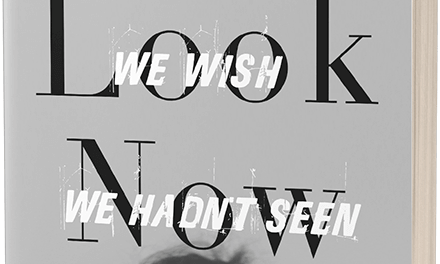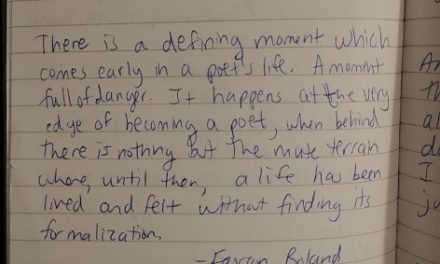
Associate Editor Taylor Byas: In the beginning, as I started sending my work out to publications, there were the usual worries —Are these my strongest poems? Does it matter if they aren’t all the same theme? Oh God, there are typos in this, how much will that matter? My mouse would hover over a “Submit” button for multiple minutes as I considered switching poems out of the packet, scrapping everything and starting fresh. I would check the most recent issues of the mag again, check the Masthead to see if I recognized anyone. Even after I finally sent the submission off, I would spend a few more minutes thinking of all the reasons they might reject my work.
Submitting our work can often feel daunting, risky, even scary. Although I’m sure there is one, I can’t currently think of another profession where one willingly places themselves in a position to be rejected as much as writers do. Back in 2019, I found myself existing in a constant (and humbling) cycle of praise and repudiation, fluctuating between the high of an acceptance and the bright disappointment coming from RejectionWiki on my large computer monitor. Another form rejection. Another tiered rejection with a note of encouragement, letting me know how close I’d gotten, how much they loved a particular poem and that editors fought for it. In those early days, I couldn’t tell you which kind of rejection hurt worse.
In 2019, I’d also started my PhD program at the University of Cincinnati, where I was also granted the opportunity to be a reader for The Cincinnati Review. The first time I logged into my account and saw my inbox full of submissions, I felt powerful. Then, suddenly, I felt stressed and overwhelmed. Even though as a reader I had no ability to reject or accept anything, I knew that my opinion counted in a way that it hadn’t before. Here I was on the other side of the submission process, finally in charge of a switch on the metaphorical control panel, partially responsible for who we let into the gates.
I set out to gain more experience reading submissions, as I’d noticed that improving my reading skills also improved my writing. I eventually ended up as an assistant features editor for The Rumpus. In this position, I had the power to also work one-on-one with authors to edit accepted pieces. It was amid these collaborations that I was called to remember the most important (and often forgotten) part about the whole process of publication: everyone involved is human.
As I recall my brief stint working as a reader for Birmingham Poetry Review (a journal that still only accepts submissions via snail mail) during my master’s program in 2018, I’m also reminded just how personal it felt. During the editing process, the staff scattered around a small office and passed submissions around like plates during a holiday dinner. We talked openly about the submissions as we worked; sharing what we thought was working well, challenging one another to little debates over interpretations of lines. It never felt like work, but like a family gathering instead. These days, I vote on submissions in the solitude of my own office. I can see the votes and comments from my peers, but technology makes the work lonelier than it was before.
As I consider the difference from the perspective of the submitter, the distance technology has created in publishing becomes more glaring. I imagine sending off submissions by paper felt like sending off a letter to a friend. If a rejection came, sometimes it came with a real signature from a real person. Yes, we might have thought, someone really did read my submission with care. Now the waiting game is bookmarked (and perhaps for some, terrorized) by the changing color of the Submittable status box. From the dark blue of “Received” to the light-blue of “In-Progress,” and eventually to the grey. Green if you’re “lucky.” I put lucky in quotation marks because that’s what an acceptance felt like when I saw that process as a machine or automated system instead of a chain of humans sifting through the queue, just waiting for something to speak to them.
As I continue to edit for The Rumpus and now serve as an associate editor for The Cincinnati Review as well, I am constantly reminded of my humanity, even over the digitized portal of the submission manager. Who among us hasn’t read a submission and felt one way, only to return to it later and feel differently? How many editors can admit that a peer’s perspective about a piece helped them to shake loose their own biases and to see the piece with a new appreciation? Who has rejected a piece because it wasn’t a fit for the publication, then felt deep joy (and odd jealousy) seeing it published elsewhere? I am guilty of all these.
What I’m saying is, being an editor has helped me to humanize the publishing process. And as a result, I can move through my own submitting with more grace, understanding, and kindness. Yes, I received that rejection, but on the other side of it, there was likely someone who was just as pained to send it. Sure, that editor wished me luck placing it elsewhere, but now I don’t doubt that they mean it. It boils down to this—no matter what side of the submission manager we stand on, we are all just reaching out a hand, hoping that someone takes it on the other side.










